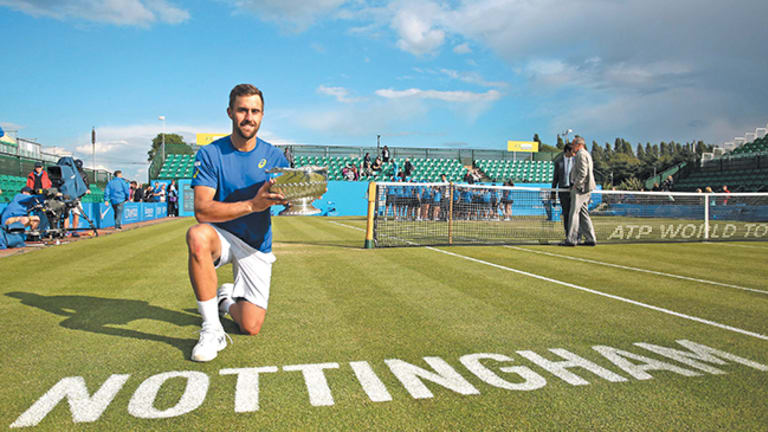As he prepares for another run towards the top of U.S. tennis, Steve Johnson takes us through a year of the tour’s global grind.
January 1, 2016
There’s no time to rest on tour, and not much time to celebrate holidays, either. It’s New Year’s Day and I just finished a two-hour workout in 90-degree heat. But that’s the way I like it, and I would never complain about starting the season in Brisbane. The air is warm and the seats are full. Nobody does sports like the Aussies; even the smaller tournaments have an incredible atmosphere. It’s the jolt you need to make you remember why you took a 14-hour flight to get here.
What makes it especially exciting for me is that I’m coming off the best season of my career. In 2015, I finished with my highest ranking, No. 32, and in November, I played my first ATP final, in Vienna. During my off-season practices, at the USTA West facility in Los Angeles, it was a great feeling to know that I can compete for titles. I even put in some work on Christmas Eve—which also happened to be my 26th birthday. I feel the way I did when I first came on tour four years ago: the sky’s the limit.
January 13
Was it just two weeks ago that I was talking about how pumped up I was to start the season? That hasn’t changed, but it didn’t take long for the reality of tour life to set in. Yesterday I lost my first-round match in three sets to Matthew Barton, a qualifier ranked No. 299. He had nothing to lose, and he played great tennis in the bigger moments. Most matches at this level come down to a few crucial points. You just have to make sure you’re the guy who always wins them. No problem, right?
At these times you remember how important it is to have a good support team. I’m traveling with my coach Craig Boynton, my trainer Christian LoCascio and Sam Querrey, who also works with Boynton and LoCascio. It’s a small crew, but we have a lot of fun. Sam is probably the most laid-back guy on tour; it’s tough to feel tense around him. We function like a two-man team on the road: if he’s doing well, it helps my confidence, because I know I can compete with him. And when I’m doing well, it gives him a boost, too.
February 19
Another tough one last week: In Memphis, I lost to Taylor Fritz in two tiebreakers. I kind of winced when I saw the draw, because I knew there was going to be a special kind of pressure in this match. Taylor is 18, a great kid and extremely talented, and we practice a lot together in L.A. I was excited for him. As the older American and No. 2 seed, I knew I was expected to win, but it’s hard to compete normally in that situation. When you know someone well, it’s hard to get comfortable; you almost feel like you’re playing against a little bit of yourself. But he beat me, and that’s life. I was happy to see him go on to make the final.
That makes two months of the season, and things have been a little slow so far. My record is 3–5, and I haven’t built much momentum. This is when it’s good to know that the season is long, and far from over. For me, trusting in the process of how I go about my game is the most important piece to the puzzle. I’ve learned that there are no shortcuts or faking it in tennis. At the end of the year, if I’m doing the right things, I know I’ll find myself in a great position.




